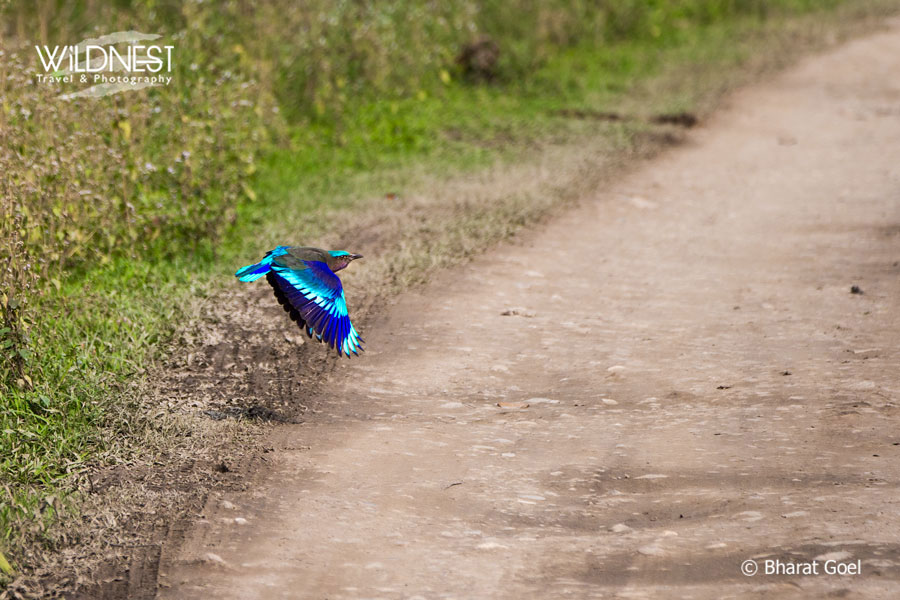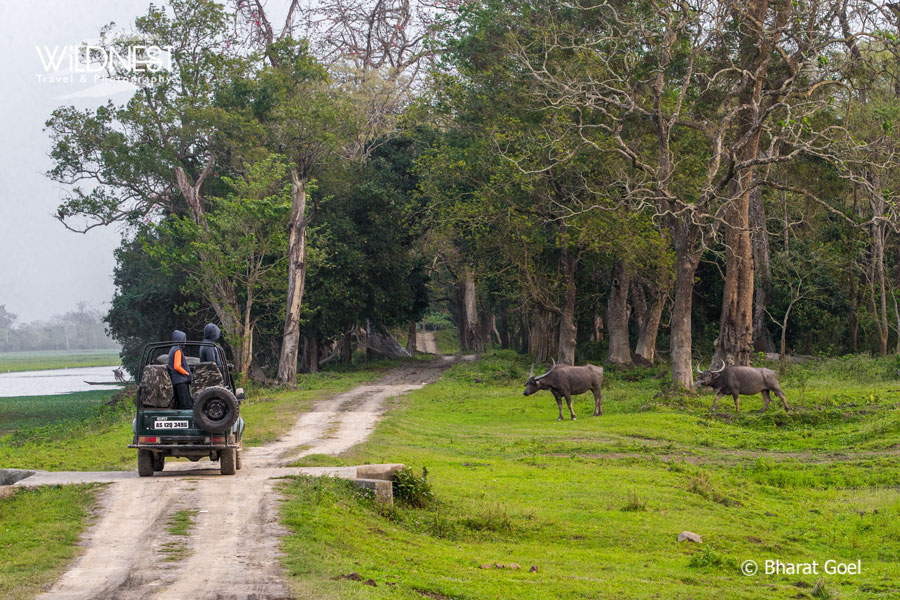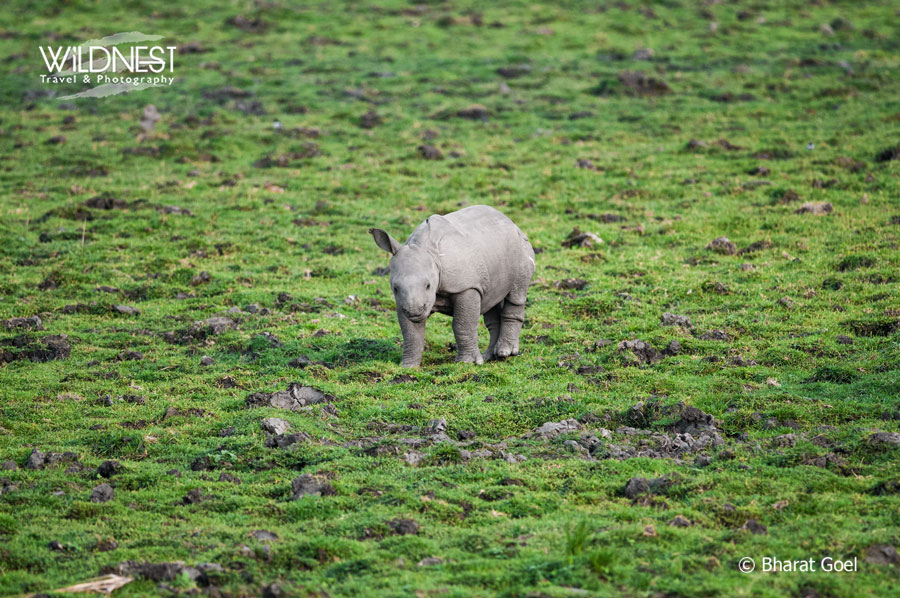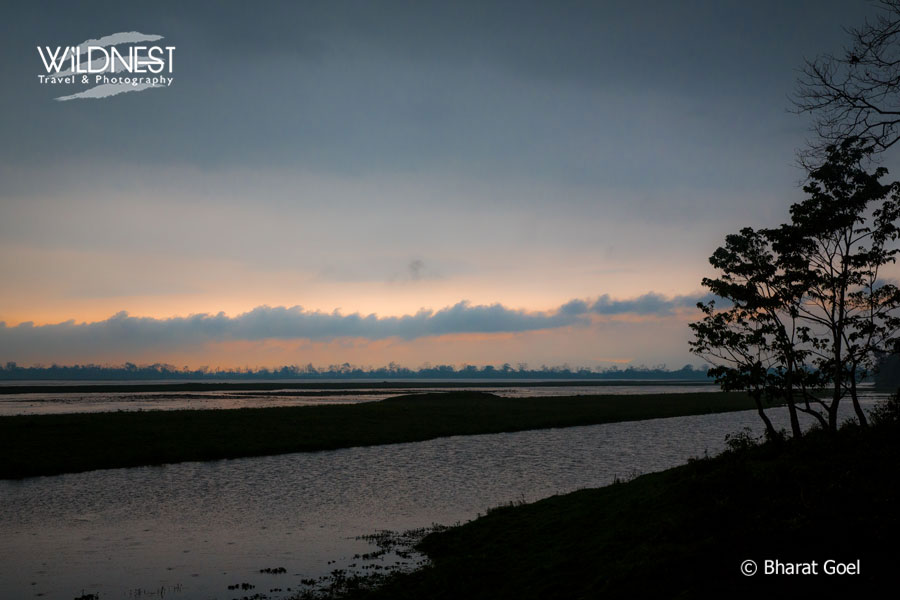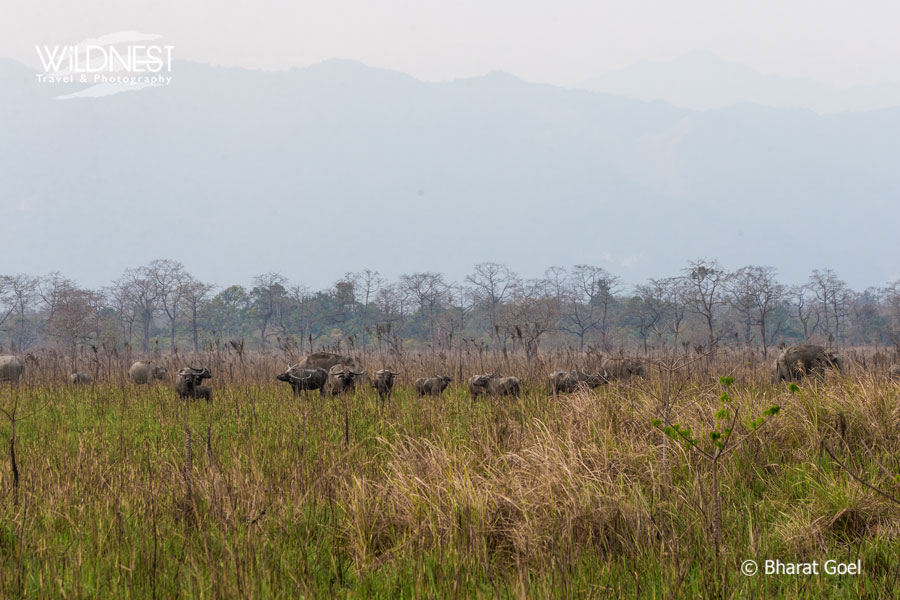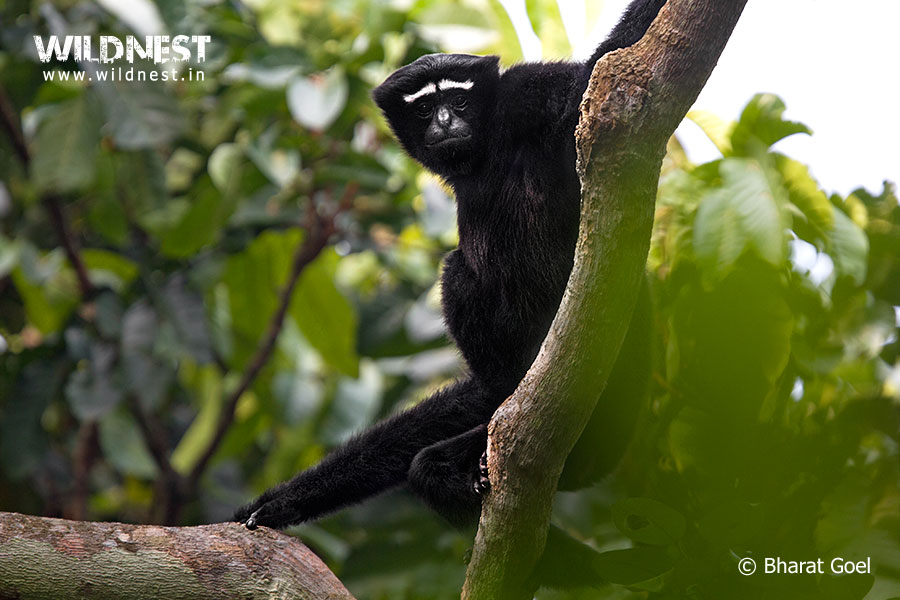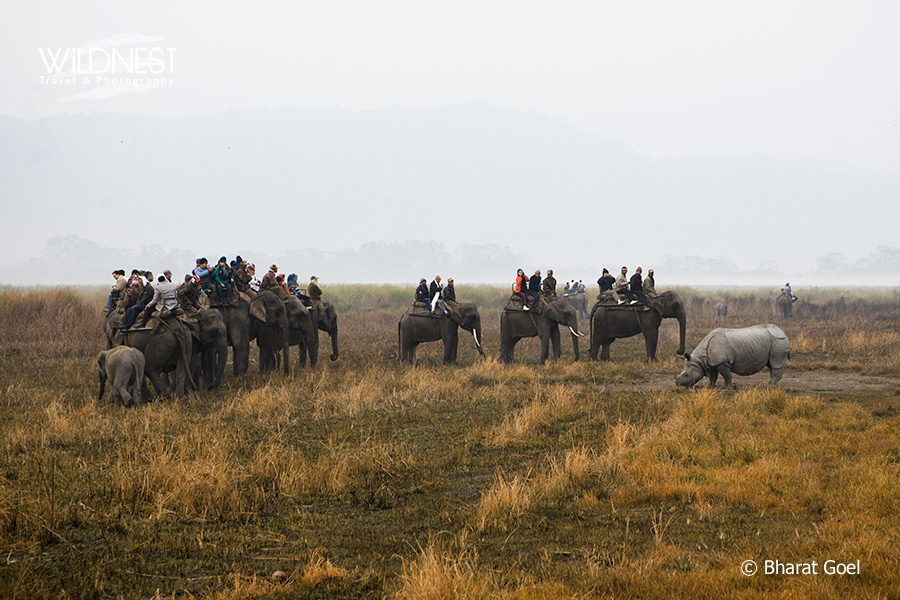About Kaziranga
Lying in the pockets of the far North East of India, beside the great Bramhaputra River, Kaziranga is one of the most successful examples of wildlife conservation in India and one of the largest strips of protected terrain in the sub-Himalayan belt. The park, which celebrated its first centenary in 2005, has an area of 430 km², mostly covered with marshlands and elephant grass. Thereby, making it the ideal habitat for Kaziranga’s most famous resident – the Indian one-horned rhino.
The population of one-horned rhinoceros had reduced to only 10 to 15 in 1905 and acting on feelings of Mrs. Curzon who could not see rhino but their footprints, it was converted into a reserved forest and later (1940), to a wildlife sanctuary. Now, the population of rhino has exceeded 2000.
Kaziranga has a varied composition. From swamps to tall elephant grass and dense tropical broad leaf forests, from four big rivers, including the Bramhaputra, to little ponds made by floods (bheels), the park has it all. Chapories or elevated regions are also present. Quite a few of them had been artificially made with the help of the Indian Army, to safeguard animals from the frequent floods that occur.
Regarded as the heaven of northeast, the park is very dear to the hearts of people of Assam. That is why it continues to survive the wounds inflicted by both, mankind and nature. Initially exploited by hunters and wrecked by naxalites, the park is now being plundered by poachers who have their eyes on the horns of the rhinos – each one worth more than gold.If you thought only humans are to blame, you’re wrong. Nature charts its own course of destruction. Every year, the Bramhaputra river floods and some animals drown while the others migrate to higher ranges because their natural habitat is destroyed.
Not only the government of Assam expends a huge sum to protect its precious and rare ecosystem but the people of Assam have also contributed to the cause of conservation. Lot of foresters have devoted their lives to protect it. Thereby making it is one of the most thrilling wildlife destinations in India and abroad.
By the end of February, grasslands are burnt and new grass starts growing, so the visibility of Rhinos and other mammals is fantastic in March. The sanctuary truly transforms into a paradise.
Hoollongapar Gibbon Sanctuary – a minuscule 21 km² sanctuary inhabited by India’s only ape, the western hoolock gibbon is also very near to Kaziranga National Park. Apart from gibbon, pig-tailed macaque, stump-tailed macaque, slow loris and three other species of primates are found here. The forest also houses the Malayan giant squirrel as well as leopard, pythons, king cobras and over two hundred bird species, thereby making it a “biodiversity hotspot”.
Flora & Fauna
Mainly four types of vegetation can be found in the park: the alluvial savanna woodlands, alluvial inundated grasslands, tropical semi-evergreen forests and tropical moist mixed deciduous forests.Near the Panbari, Kanchanjhuri and Tamulipathar blocks, thick evergreen forests are found. These forests contain trees such as Talaumahodgsonii, Aphanamixispolystachya, Dilleniaindica, Ficusrumphii, Garciniatinctoria, Cinnamomumbejolghota, and species of Syzygium. Areas near the Baguri, Bimali, and Haldibari blocks have tropical semi-evergreen forests.Common trees and shrubs are Albiziaprocera, Lagerstroemia speciosa, Duabangagrandiflora, Mallotusphilippensis, Cratevaunilocularis, Grewiaserrulata, Sterculiaurens, Brideliaretusa, Leeaindica, Leeaumbraculifera and Aphaniarubra. Common tall grasses are elephant grass, spear grass, the common reed and sugarcanes.
The big five would be great one-horned rhinoceros, Asian elephant, Asiatic wild buffalo, swamp deer, Royal Bengal tiger. Other animals include the hog deer, hog badger, jungle cat, fishing cat, civet cat, leopard, sloth bear, leopard, ruddy mongoose, and porcupine.
More than the 500 birds take refuge here. Some of the birds that can be found here include: the Himalayan griffon, oriental honey buzzard, black-shouldered kite, Brahminy kite, black kite, white tailed eagle, Pallas’s fishing eagle and the grey-headed fishing eagle.During winters, the lakes and marshes of Kaziranga are a sight to behold. Migratory birds like bar-headed geese, greylag geese, Ruddy shelduck, Falcated duck, Gadwall, northern shoveller and red-crested pochard, can be spotted in the sanctuary.
Kaziranga Weather
Summers (February to May)
Summers are dry and windy with maximum and minimums of 37 °C (99 °F) and 11 °C (52 °F), respectively.
Monsoons (June to September)
Monsoons are hot and humid with mean rainfall of 2200 millimeters. During the months of July and August, three-fourths of the western region of the park is submerged under water, due to the rising water level of the Brahmaputra.
Winters (November to February)
Winters are mild and dry with maximum and minimum being 25 °C (77 °F) and 5 °C (41 °F), respectively





